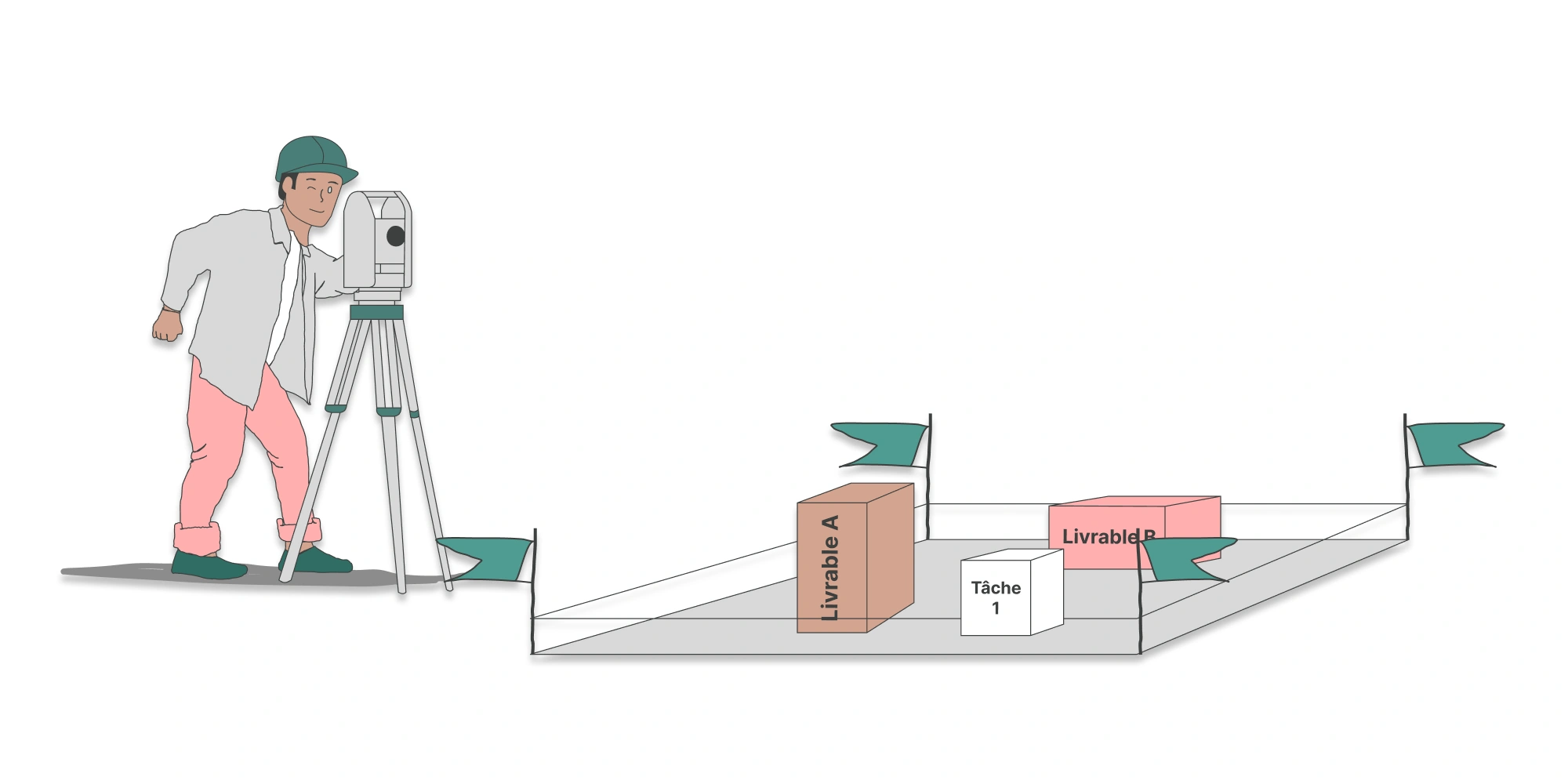Define Your Project Properly: Scope, Objectives, and Deliverables
Estimated reading time : 10 minAccording to a study by the PMI (Pulse of the Profession 2018: Success in Disruptive Times) of more than 4,000 project managers, 29% of projects fail due to poorly defined goals and vision from the outset. This study, along with other research (Gobeli & Larson 1990, Standish Group 2009, Pinto & Slevin 1988), highlights a direct link between project success and the clarity of objectives and scope definition.

Defining project content: beyond the specification
The definition of a project’s content goes far beyond a simple specification. It frames what will be delivered, clarifies expectations, and ensures a shared vision among all stakeholders. This process details the project’s objectives, deliverables, and constraints to keep it aligned with the sponsor’s needs and strategic requirements.
More than a contractual document, the content definition serves as a reference at every stage of the lifecycle. It facilitates decision-making, helps anticipate risks, and provides a solid basis to structure the work to be done.
Defining project content includes the following elements:
Project objectives
The first step is to determine the objective(s) to meet the sponsor’s expectations. A project objective must answer the essentials: "What?", "When?", and "How much?"
Project objectives are overall outcomes to achieve the project’s purpose. They allow team members to regularly evaluate their work and realign when gaps appear, contributing to overall success.
Depending on complexity, multiple objectives may be needed. There’s no fixed rule about the number—common sense prevails.
Project deliverables
Once objectives are set, they can be broken down into project deliverables. Deliverables are tangible, measurable, and verifiable results expected when pursuing an objective.
Deliverables aren’t limited to the final output. Intermediate outputs—such as budgets, plans, mockups, or drafts—are also considered deliverables.
There are two types of deliverables:
- External deliverables, which are results intended for the client (e.g., audit report, training plan, visual identity).
- Internal deliverables, not shown directly to the client but essential to smooth execution (e.g., quality tests, progress reports, feasibility studies).
Project milestones
Once objectives and deliverables are drafted and validated by stakeholders, it’s time to define project milestones.
A milestone is a predefined key event that marks a significant stage. It serves as a strategic checkpoint to track progress and structure execution.
Milestones provide an initial schedule estimate and act as control points. They are generally tied to a deliverable, which often serves as proof that the milestone has been reached. Their validation allows stakeholders to assess progress and, if needed, adjust course.
Milestones naturally fall on the timeline when sequencing the project. However, some may be set due to external reasons such as a client-imposed deadline, a strategic meeting, or a specific event (e.g., trade show, conference, product launch), which imposes time constraints.
Technical requirements
Technical requirements are the conditions or capabilities a product, service, or result must include to meet its specifications. In other words, the rules or specific features that deliverables must satisfy. They can cover:
- Performance: the engine must output 300 hp; the app must support 10,000 concurrent users; …
- Security: personal data must be encrypted; the medical device must be 99.9% sterile; …
- Architecture & infrastructure: the app must be coded in React.js; access to floors must be provided by 3 independent elevators; …
- Compatibility & integration: the electric motor must be compatible with lithium and hydrogen batteries; the system must import Excel, CSV, and JSON files; …
- Reliability & availability: the system must achieve 99.9% uptime; the train must run 1 million km without a major failure; …
- Ergonomics & accessibility: the UI must comply with WCAG 2.1; the car must be intuitive with ergonomic controls; …
These requirements stem from customer expectations, applicable regulations, or technical constraints.
Boundaries and exclusions
Boundaries and exclusions define what is in and out of scope. They prevent misunderstandings and protect the team from uncontrolled scope creep.
- Boundaries define what the project covers and how far it extends. They set responsibilities, resources, processes, and results, avoiding unrealistic expectations and out-of-scope requests: the app is developed for Windows only; the company will only build the building exterior; …
- Exclusions explicitly state what is out of scope. They clarify what the project will not do, preventing confusion with the sponsor. They go further than boundaries: the app will not be developed for Android; the company will not handle interior fit-out; …
Defining boundaries and exclusions early prevents scope creep, improves resource management, and clarifies expectations.
Orchesia: a solution to help you build your project
As we’ve seen, starting a project requires laying solid foundations and explicitly defining its objectives, deliverables, milestones, requirements, and boundaries.
With Orchesia’s mind map, visually structure your project into clear, detailed objectives. Define metrics to measure progress and adjust your efforts accordingly.
Break down objectives into internal and external deliverables, assign the right roles to your sponsor to provide visibility and the ability to comment on or validate expected results. Track and document progress directly within each deliverable.
Orchesia goes further! Break deliverables down into tasks, subtasks, and work packages to build a detailed project, refine estimates, and optimize sequencing. With our dependency management approach, identify key milestones and anticipate their constraints.
Draft your documents, define the project’s requirements and boundaries, and share them easily with collaborators and the sponsor.
Learn more about breaking deliverables into work packages
Learn more about project sequencing
Try our project management software Orchesia free for two weeks, no commitment!